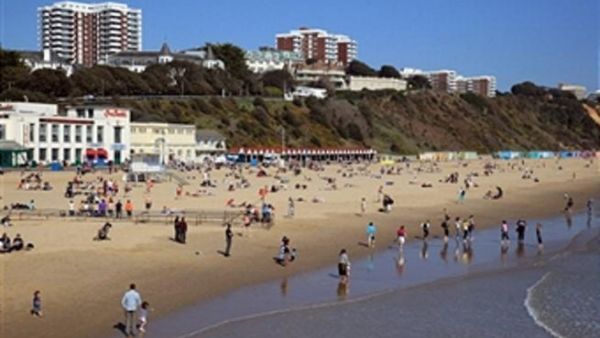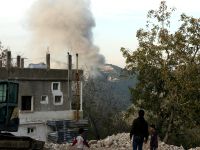Choked in West Beirut’s legendary late-afternoon traffic jams, the city’s long-suffering taxi drivers could be forgiven a weary shrug of the shoulders. The regular custom from GCC visitors every summer that was a banker for the Lebanese economy has largely evaporated this year, in the wake of the Arab Spring and the resulting increase in regional tensions. “There are simply no Khaleejis around,” says one hotelier in Beirut’s Hamra district.
“Tourism is holding up OK for us as we’re not dependent on Gulf tourists – but for other high-end hotels here, it’s hurting.”The figures appear to bear this out. Gulf tourism arrivals into Lebanon were down eight per cent in the first five months of 2012, according to Banque Audi. Given that early 2011 was also sharply affected by the outbreak of protests across the region – incoming tourists to the country were down 24 per cent year-on-year to 1.66 million in 2011 – this spells bad news for Lebanon’s economy, which is highly dependent on tourist dollars.In the early part of this year, Gulf visitors were still relatively thick on the ground.
Saudi visitors accounted for the largest proportion of visitors to Lebanon in the first quarter of 2012 at 9.6 per cent of a total 313,854 visitors, according to figures from Lebanon’s Banque Audi. The big hotels in the mountains above Beirut – locations like Bhamdoun, Aley and Broumanna – long favoured by Gulf tourists for its cooler breezes, are reporting dips in occupancy levels well below the seasonal average.Above all else, it is Syria’s descent into civil war that is putting off GCC tourists from hitting Lebanon’s marinas, beaches and casinos. Before 2011, large numbers of Gulf visitors would make the long journey to the Mediterranean via road, cross Saudi, Jordanian and Syrian territory before crossing the Ante-Lebanon range. Since hostilities broke out between the opposition and Bashar al Assad’s forces, the option of reaching by Lebanon by road has been ruled out.
Furthermore, Gulf governments have discouraged their nationals from visiting Lebanon even though the country has witnessed relatively little violence compared to others in the region, and confined to areas like Tripoli. Saudi Arabia’s Ministry of Foreign Affairs in early July warned its citizens from visiting the country, “for their own safety”. This followed similar travel advisories issued earlier in the summer from the likes of the UAE and Oman. In fact, most tourists didn’t need the advice. They had long scrapped plans to visit Beirut. The downturn in Gulf visitors to destinations like Lebanon doesn’t mean that Middle Eastern hoteliers are in crisis. Far from it, if occupancy statistics are to be believed. These suggest that the early months of 2012 may have witnessed something of a revival for most Arab destinations. Figures from Ernst & Young’s Middle East hotel Benchmark Survey for the first five months show that occupancy rates in Beirut rose by nine percentage points to a relatively respectable 67% (though with the proviso that this was before the Gulf travel warnings were issued, and not taking into account the large influx of GCC visitors that is traditionally seen in the summer months). “While there has been a decline in tourism in Lebanon, it’s not been a drastic decline – and importantly, it’s been compensated by more Lebanese expatriates coming to Lebanon,” says Marwan Barakat, chief economist at Banque Audi in Beirut. “Activity at Beirut International Airport is up by 13 per cent because of more Lebanese coming. While we do feel the impact of fewer GCC nationals, it is being offset by the arrival of more Lebanese.”
Other destinations in the Arab world have reported stronger tourism performances in the first half of 2012. Jordan’s capital Amman showed a 78 per cent occupancy rate in the first five months, a 20 per cent increase on 2011, says the Ernst & Young report. Jordan’s Tourism Ministry claims a 19 per cent increase in revenues in the January-June 2012 period to JD1.2bn, with 66,092 overnight tourists from the Gulf countries in June – a massive 41 per cent increase on the same month in 2011. Even Egypt’s capital Cairo, the centre of persistent turmoil, has seen an increase – 15.5 per cent to 47.8 per cent – that will be welcomed by the new president, Mohammed Mursi. Ironically, it is the Gulf states themselves that have shown the starkest declines in hotel occupancy levels for the early part of 2012. Muscat, Doha and Kuwait are all down, while Abu Dhabi and Dubai are flat on last year. However, these figures covering the first five months may not be reflected in full year performance levels – and with Ramadan falling bang in the middle of the summer, sector analysts expect GCC tourism performance to show an uptick.
Gulf visitors appear to be increasingly favouring the home comforts. “We have seen people flock to the safe havens and the UAE definitely benefited out of that, especially Dubai and Abu Dhabi,” says Konstanze Auernheimer, director of marking and analysis at STR Global. “In Abu Dhabi it’s not so obvious because a lot of new hotel supply has come online that dilutes that performance but certainly Dubai is benefiting.”Even Doha – never considered a tourist destination in its own right – may be experiencing uptick. Travel within the Gulf may be a feature this year, but tourists from the GCC may also seek out destinations further afield. Some countries have shown an opportunist bent in seeking to lure Gulf tourists away from traditional destinations.
The central Asian state of Azerbaijan has this summer for the first time offered holiday packages specifically marketed to attract GCC visitors. Western capitals have also sought to tap the Gulf tourist dollar. London has long been a draw for Gulf Arabs in the summer months. For the last couple of summers, British newspapers have been running stories about the phenomenon of the ‘Ramadan Rush’ that has brought rising numbers of Arab tourists to London’s key attractions like Knightsbridge and Bond Street, in advance of the onset of the month of fasting. Some London five-star hotels are this summer reporting 80 per cent Middle Eastern occupancy, supposed Ramadan-focused spending spree in which the average Saudi is reportedly spending £1900 ($3,000) in an average shopping trip to the West, compared to just £550 for the average American. For major league London retailers like Harrods – owned by Qatari investors – the Ramadan Rush is seen as a bonus to the summer peak period. “We have now started to witness a sharp incline in sales to Middle Eastern customers as they enjoy the final weeks of their summer vacations in London before Ramadan,” says a Harrods spokesperson. Like other large shops it has attempted to entice visitors with offers of luxury merchandise, along with a host of other incentives intended to make shopping at Harrods more pleasurable for Middle Eastern customers.
These include tax-free shopping, Arabic speaking staff, worldwide shipping, later summer opening hours, along with key services such as By Appointment personal shopping and a concierge service.But the reality is that the holy month of Ramadan itself is not a trigger for increased travel to non-Muslim destination. Says Auernheimer: “Now it’s a bit more difficult with Ramadan in summer months, suddenly it’s impacting Gulf travel patterns as they want to be home for Ramadan itself. We are aware that they are leaving earlier whereas before they tended to be in London for most of the summer.”Ramadan is more of a prompt for Gulf citizens to stay at home rather than venture overseas. Ernst & Young’s data bears this out.
Dubai’s occupancy levels in August 2011 – coinciding with the month of Ramadan last year – dipped sharply in comparison to July and September, which saw 80.8 per cent and 74.1 per cent occupancy respectively, compared to just 52.5 per cent in August. Ramadan is unlikely to prove a gold rush for London’s hoteliers, retailers and restaurateurs, says Auernheimer. “Because of the Olympics in London this year, a lot of Middle Eastern families haven’t come to London. The big central London hotels such as the Park Lane Hilton where they would normally stay are all booked up due to the Olympics. So more of them are going to other cities like Geneva and Munich, the other locations where you tend to find a high contingent of Middle Eastern guests and where you have enough top-end hotels with suites that are attractive to them,” she says. With a potentially sizeable market staying at home, hotels in the Gulf states are making more of an effort to appeal to this lucrative customer base.
Bahrain’s Gulf Hotel is offering guests a Ramadan Nights package with a specially erected Ramadan Tent during the holy month, with VIP Packages including a special Iftar buffet for two in its main restaurants and room serviced Suhour or buffet breakfasts. With summer Ramadan periods set for the next few years, the Gulf’s native tourism sector will be looking to ensure that more of the dinars and dirhams are kept at home – though London will always appeal and destinations like Lebanon will also be looking to to lure the absent Gulf visitors back once the regional political climate is stabilised“Things have calmed down and people will go back to their respective destinations,” says Auernheimer. “Some of our numbers suggest that people have already started to come back to traditional destinations.”








